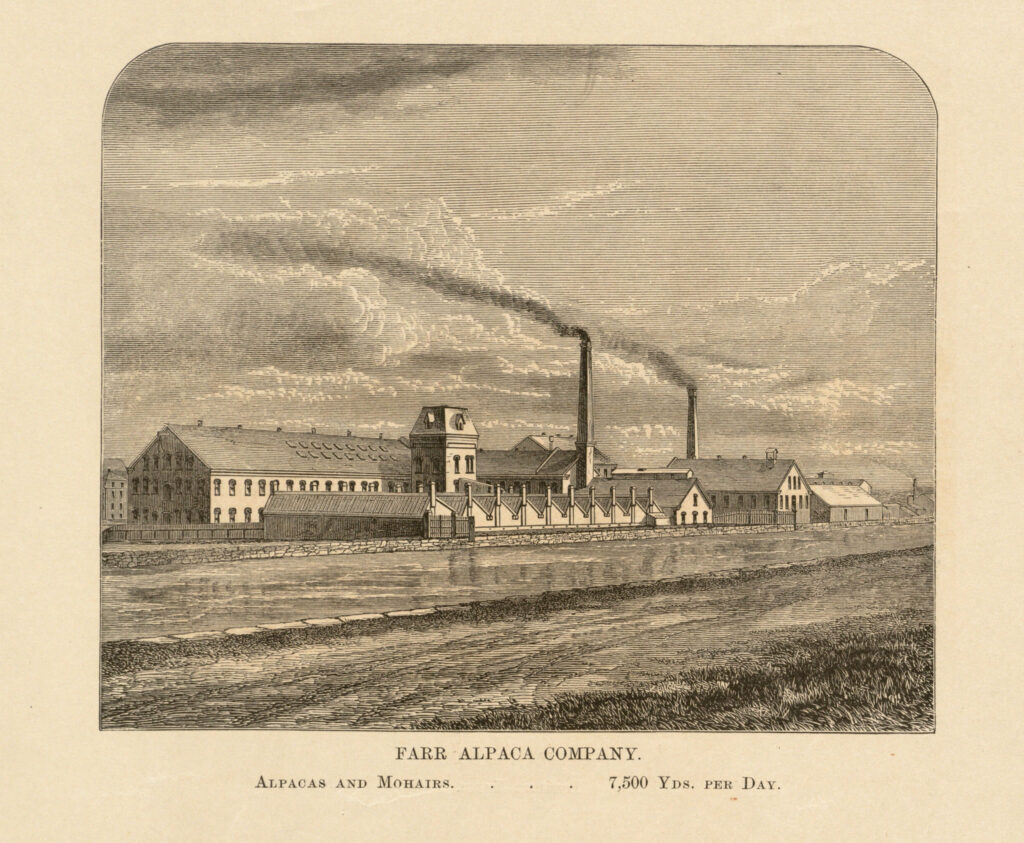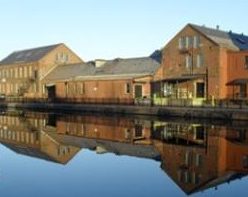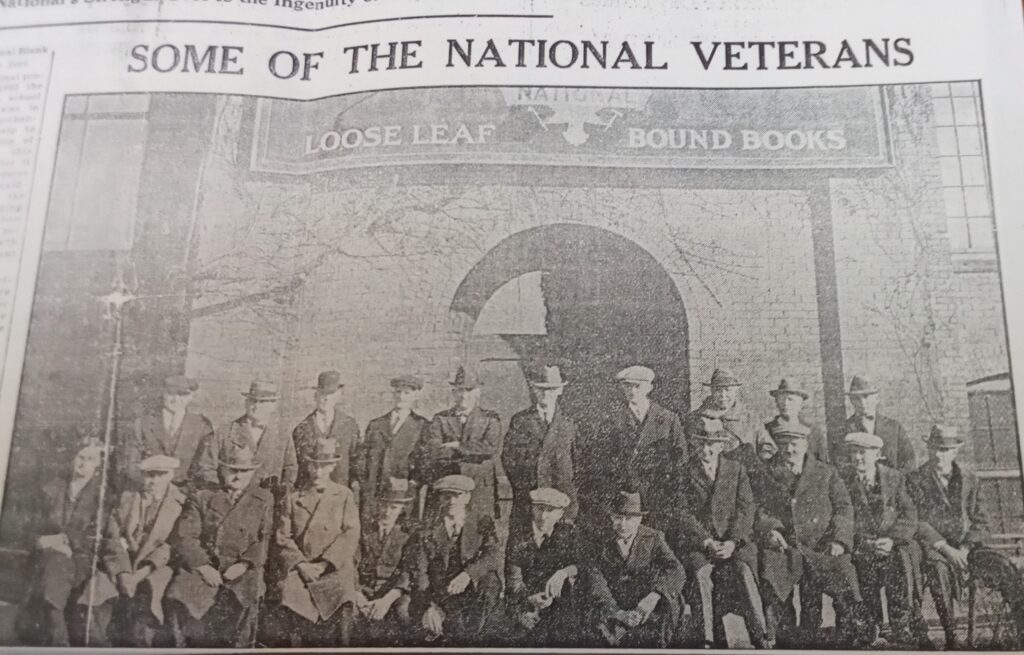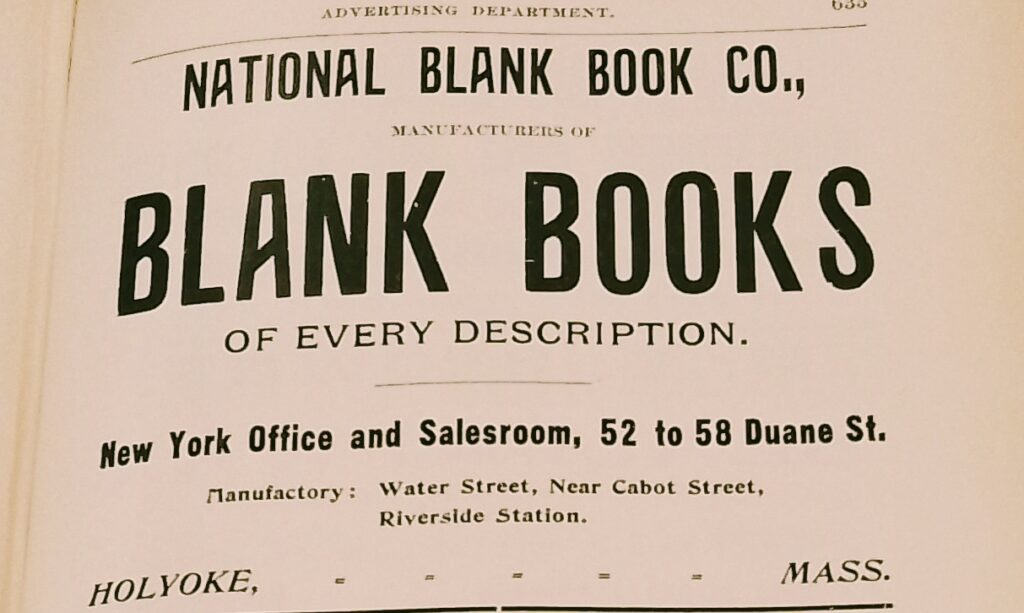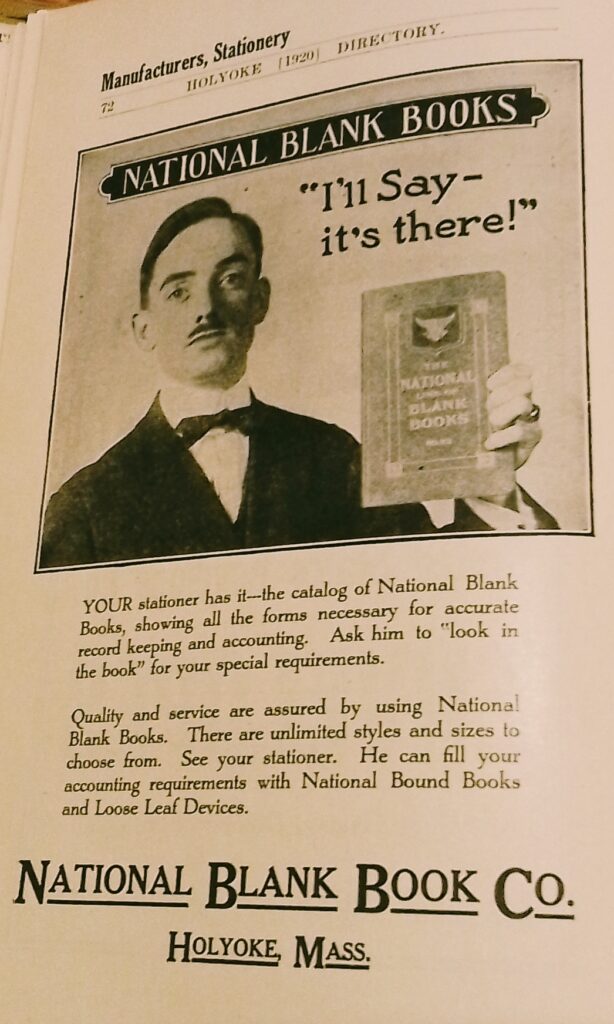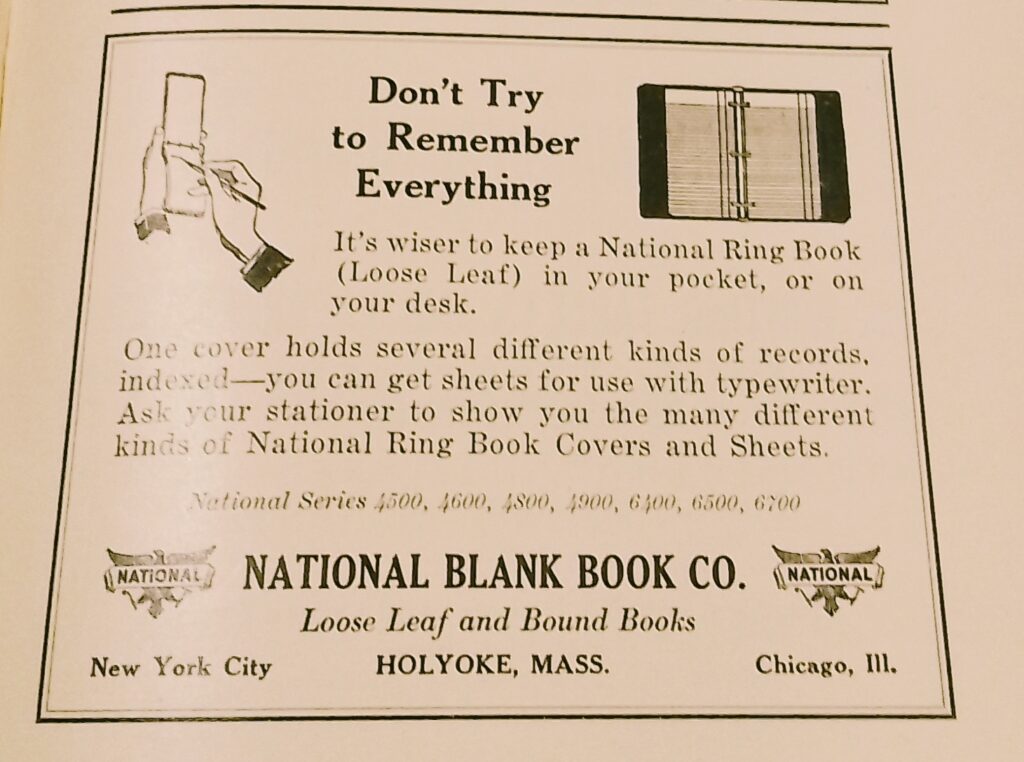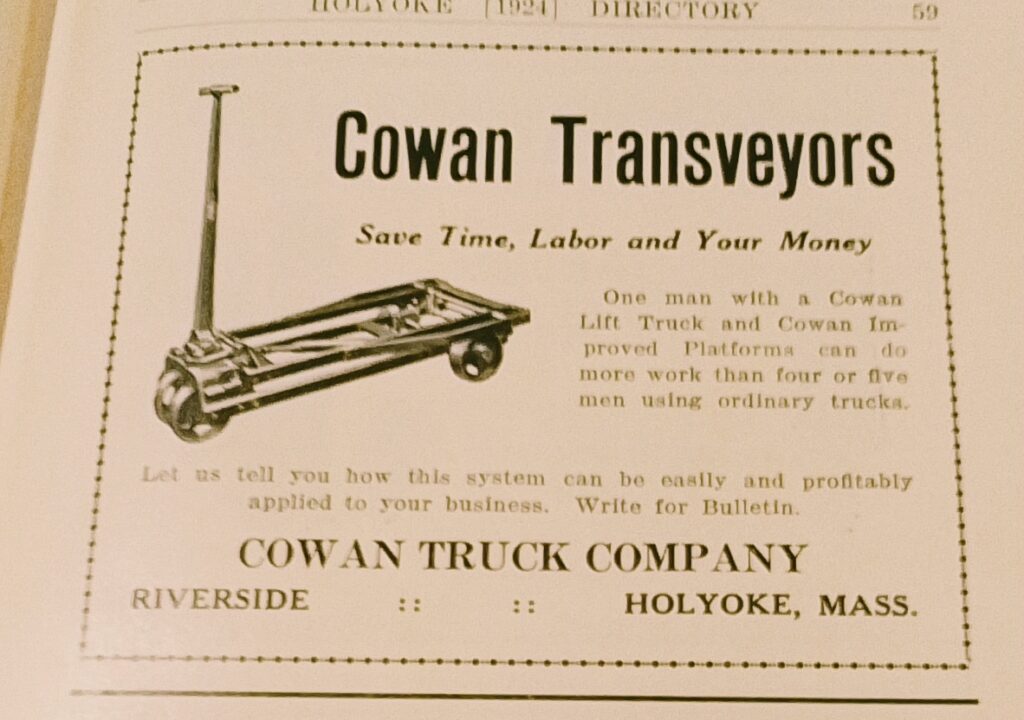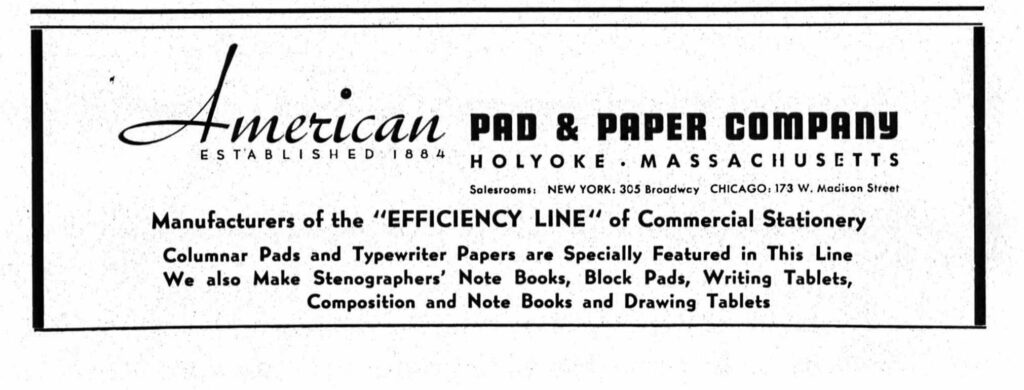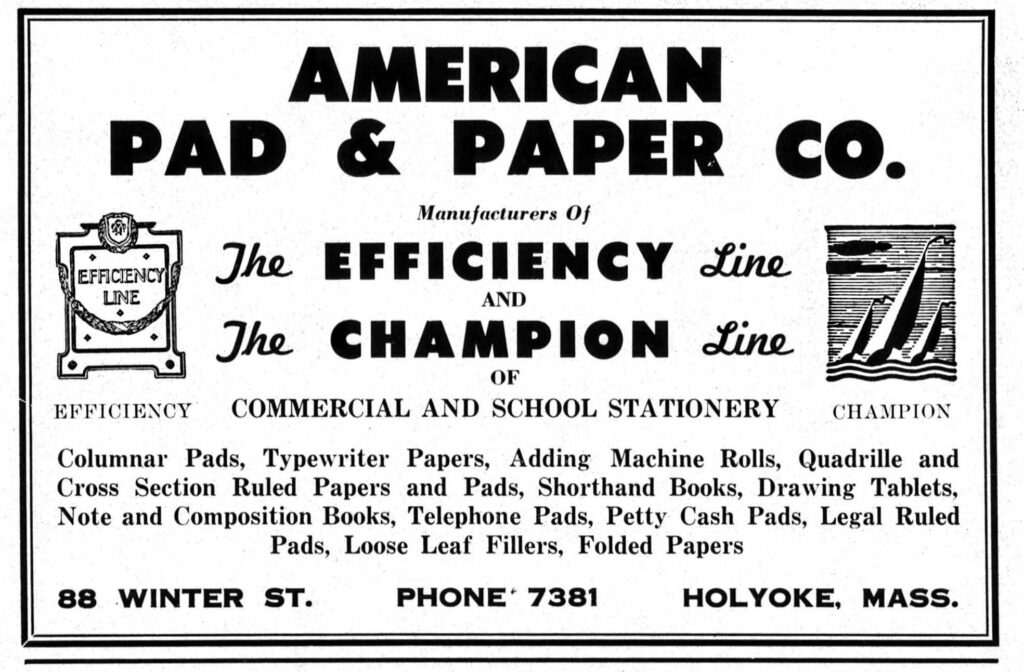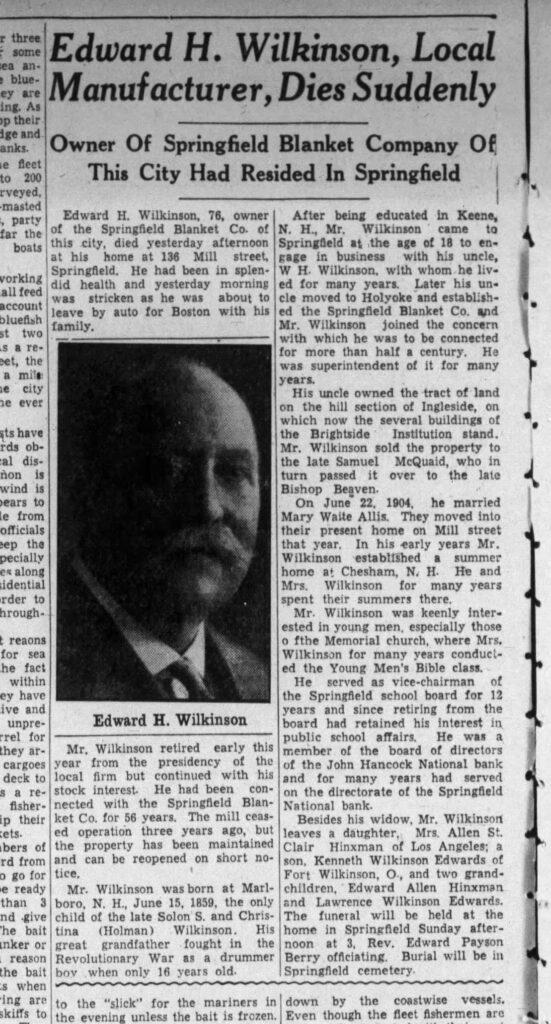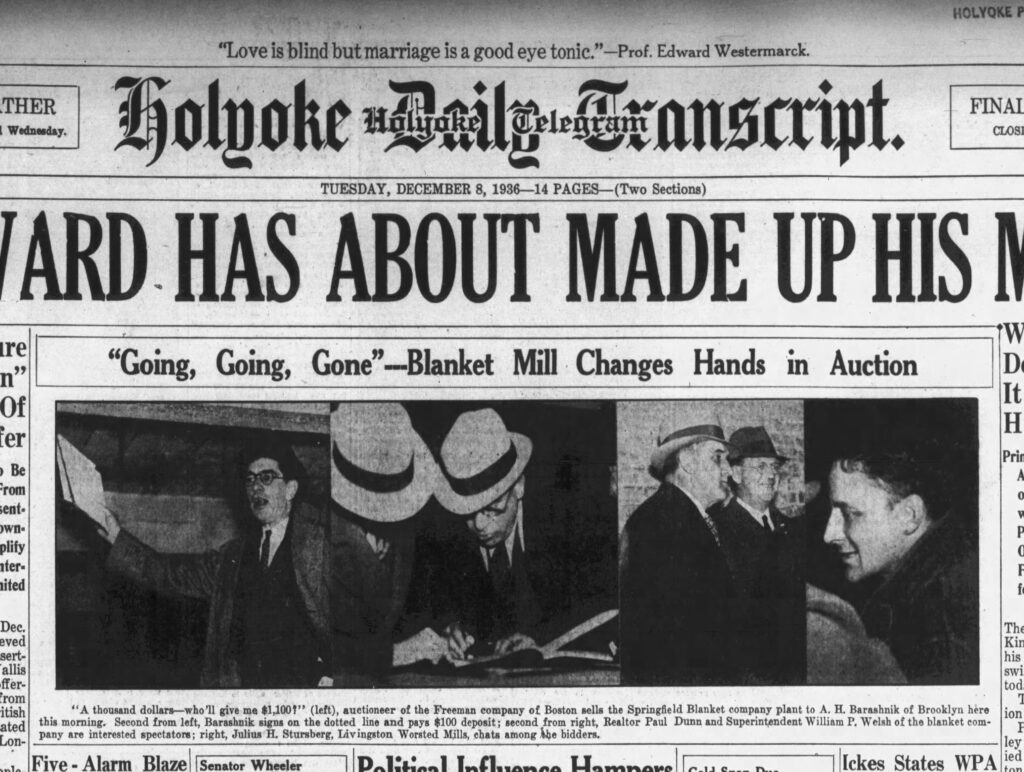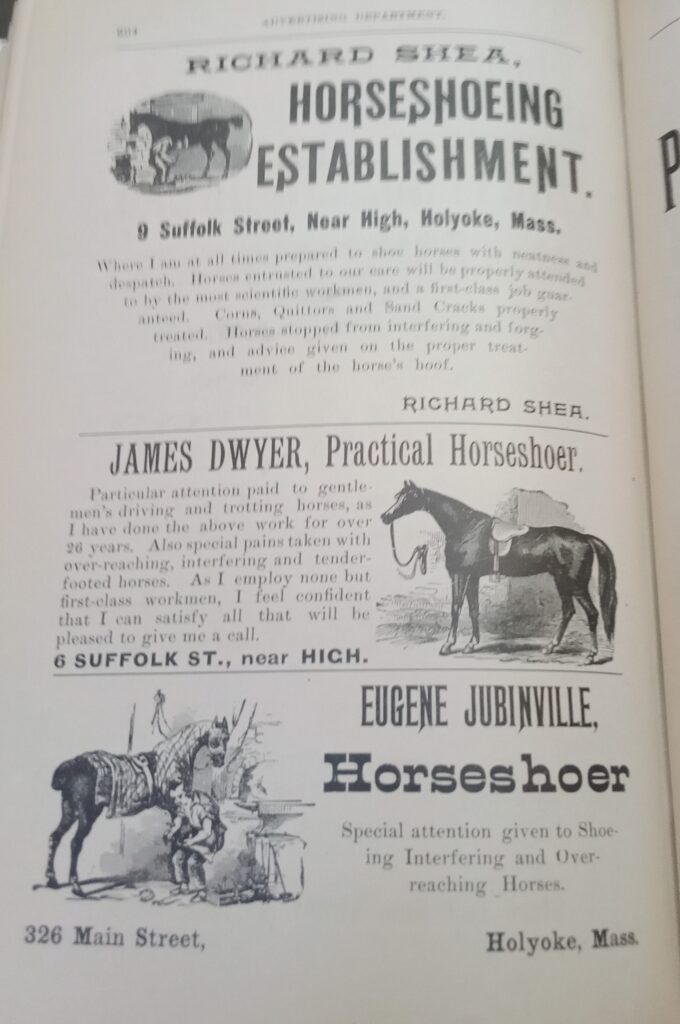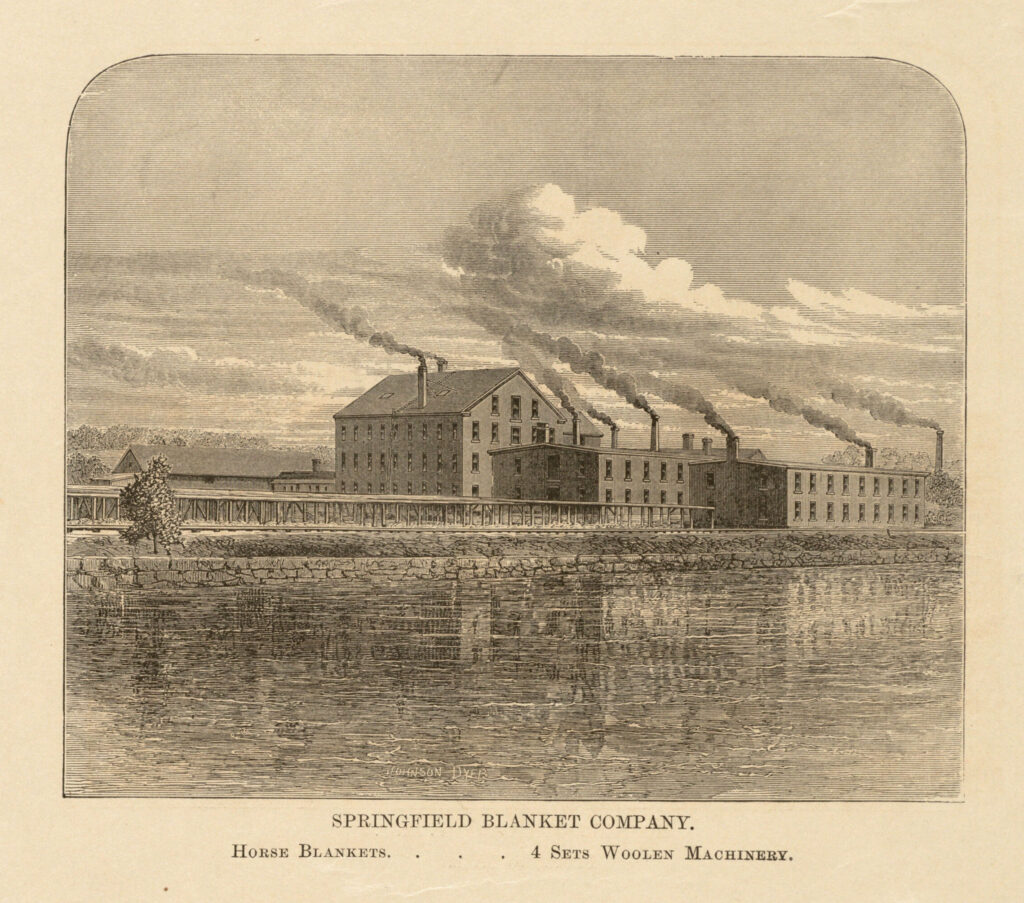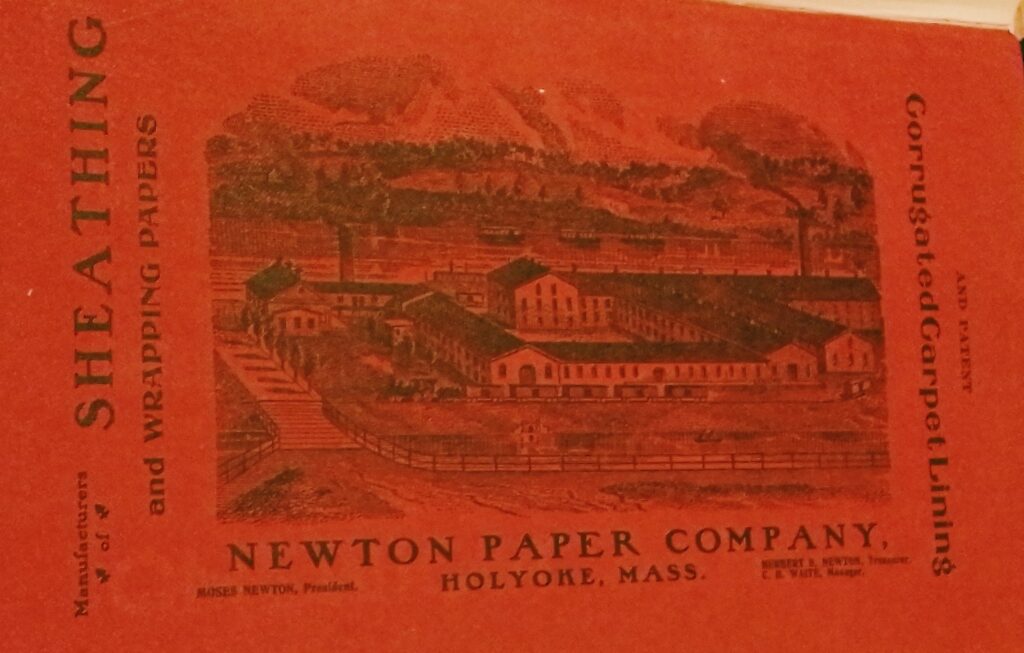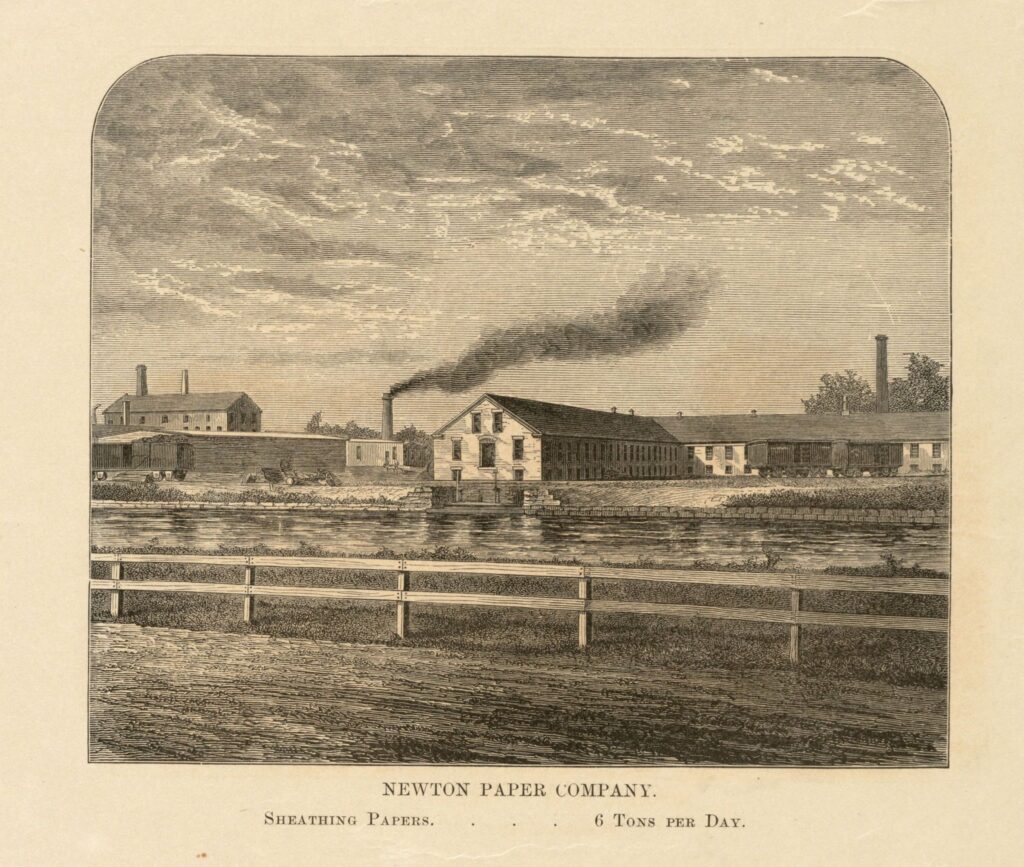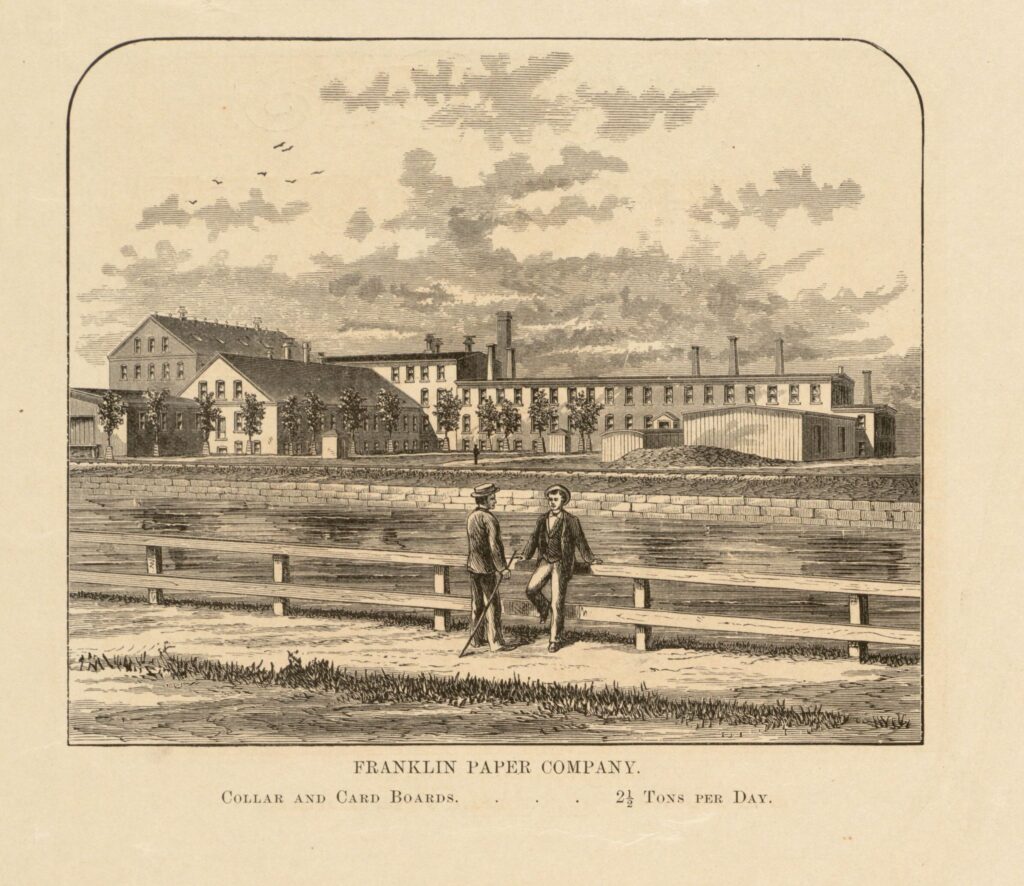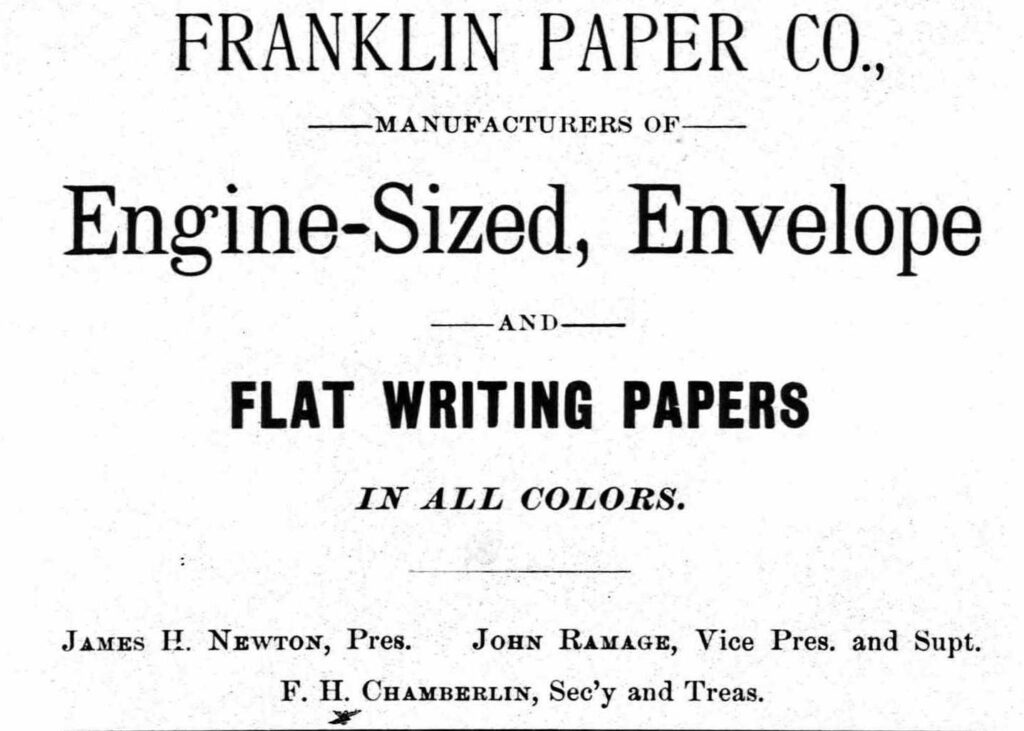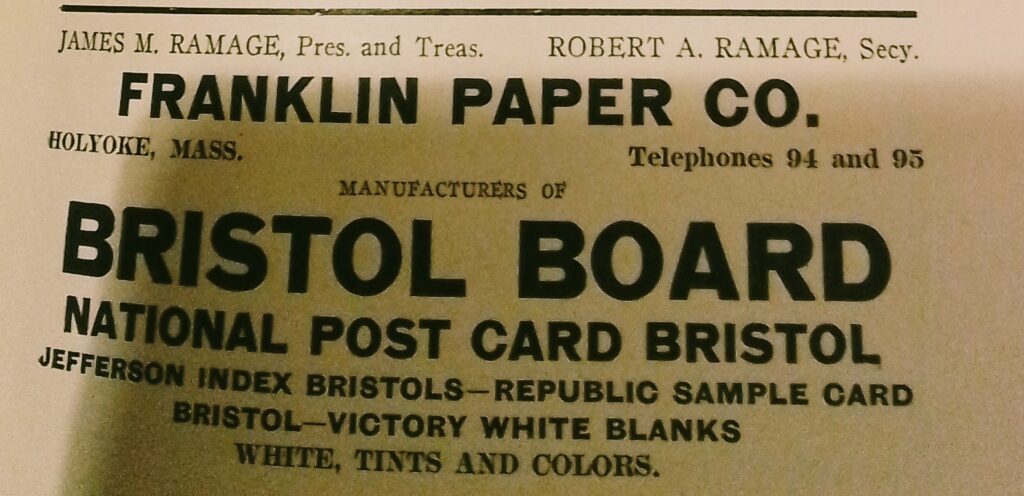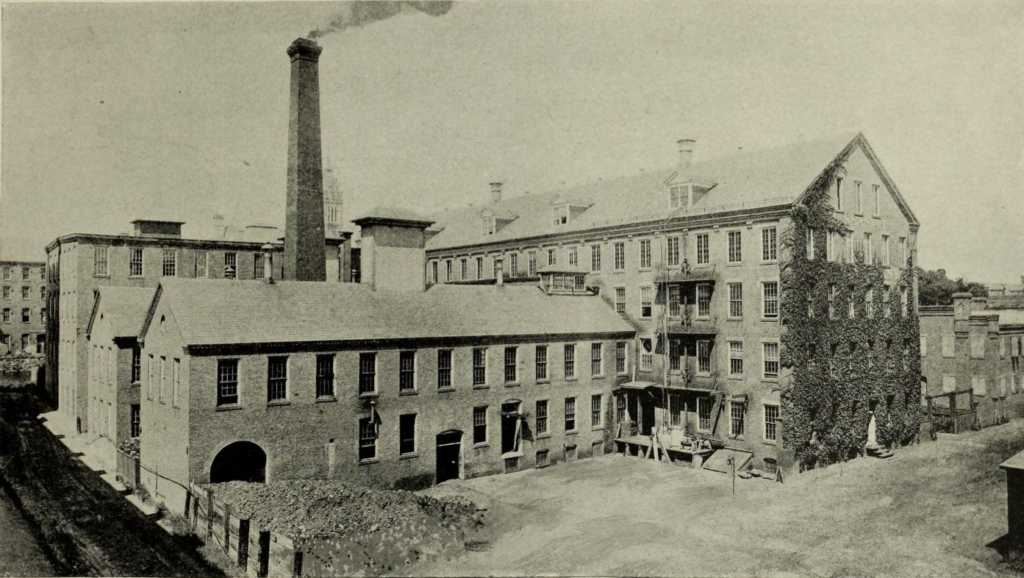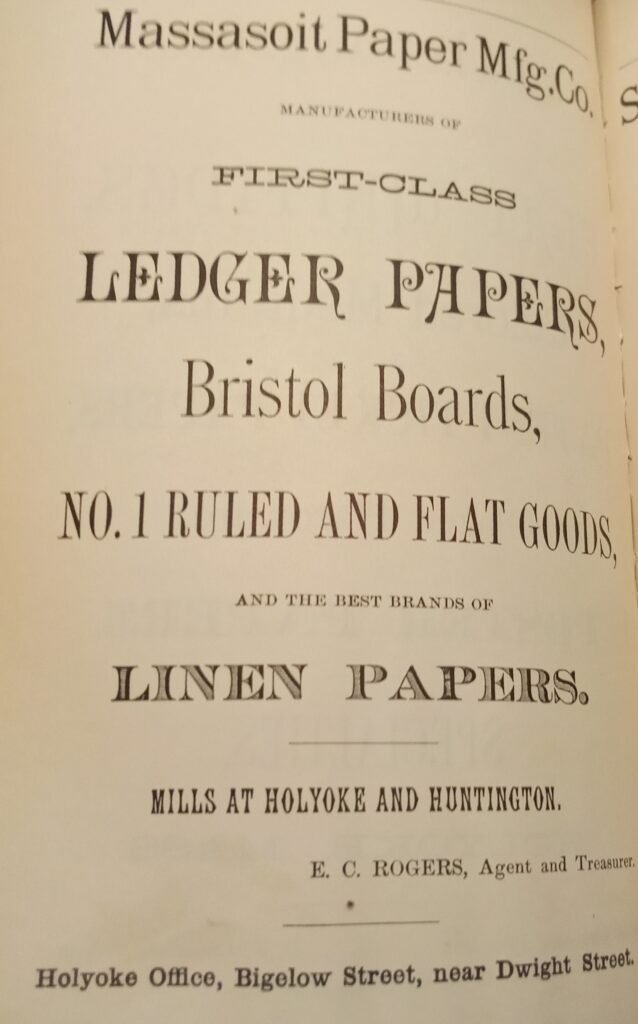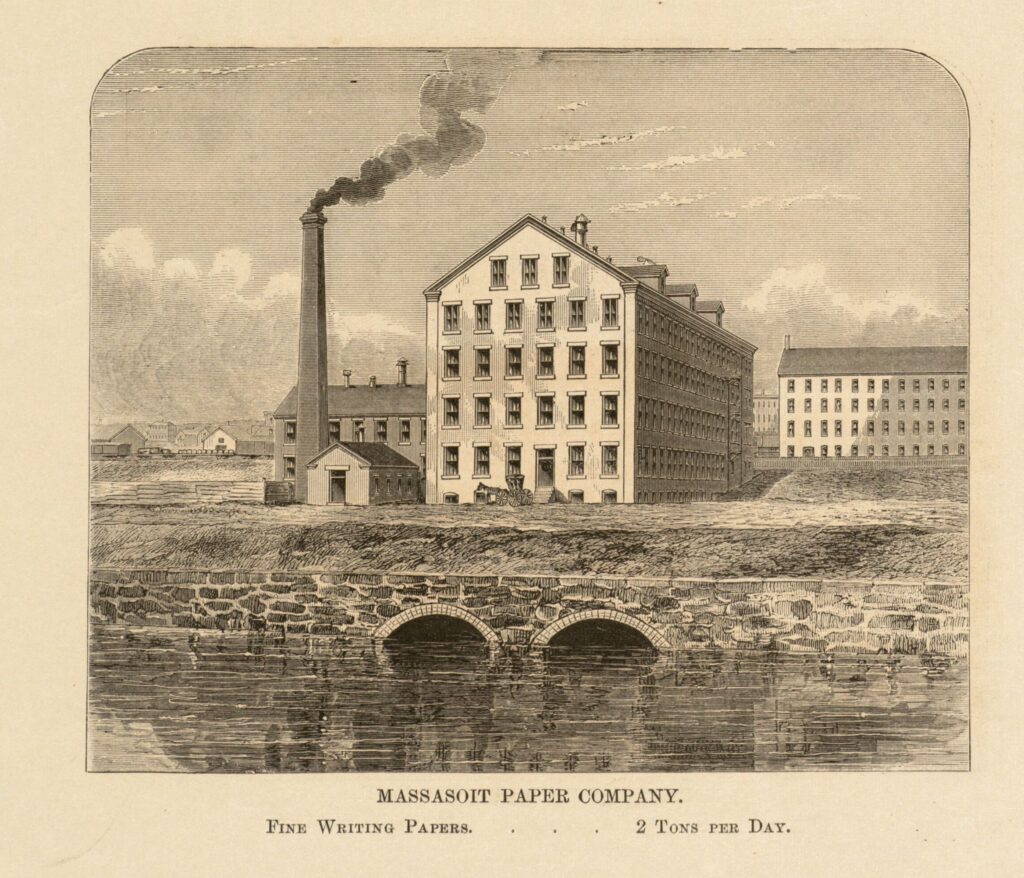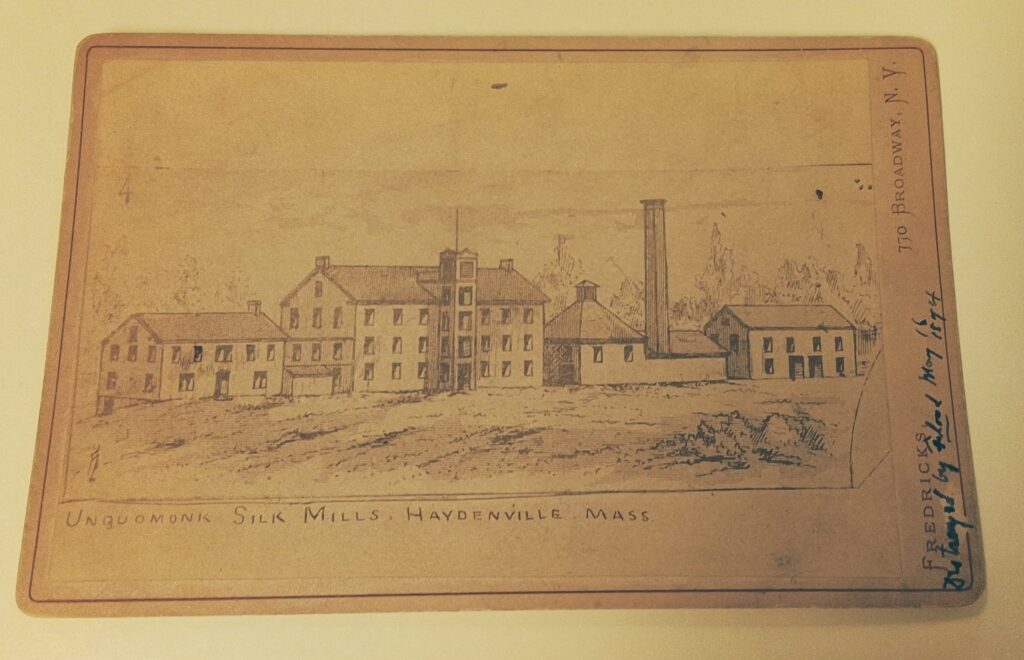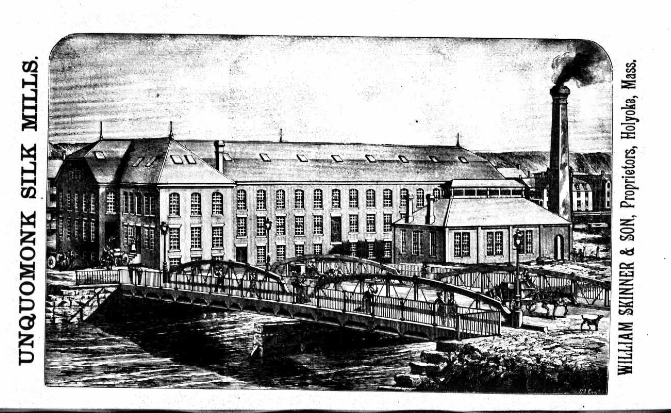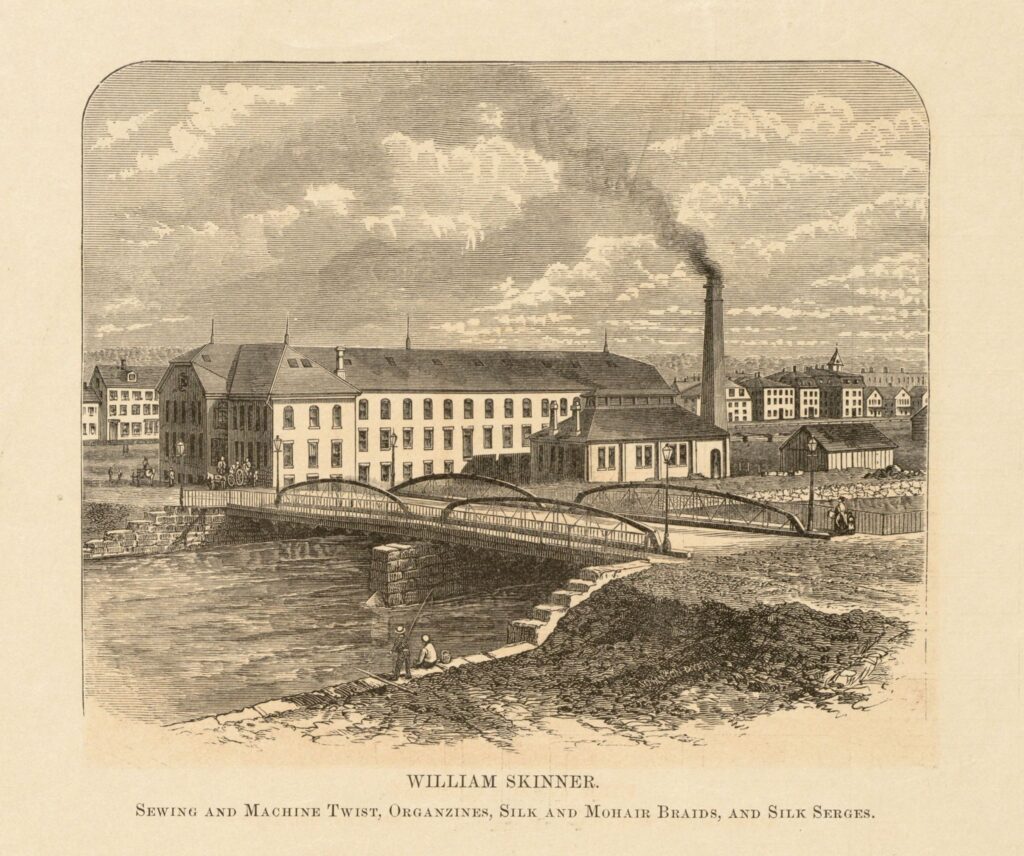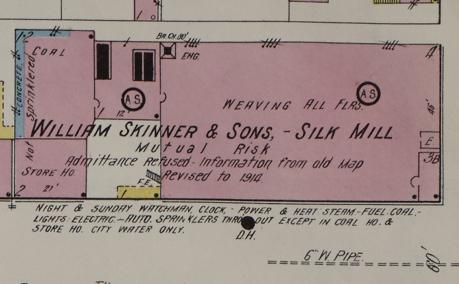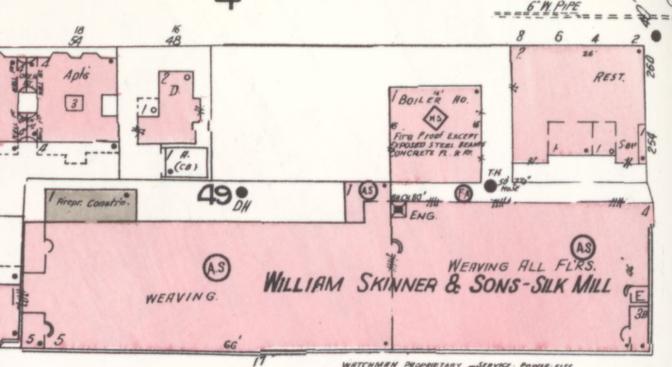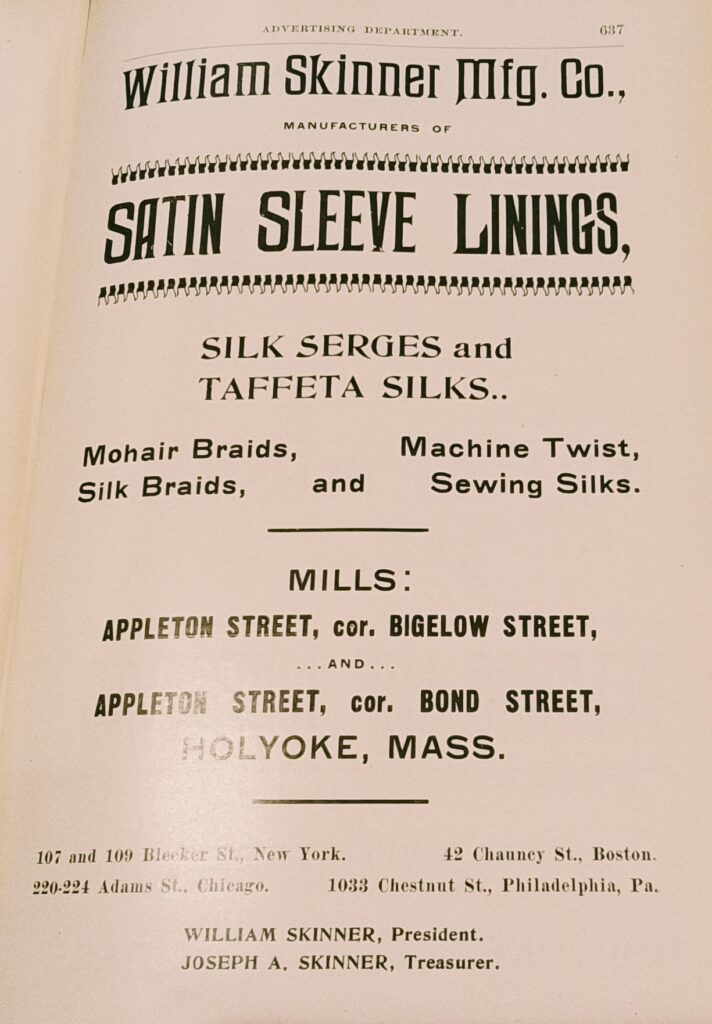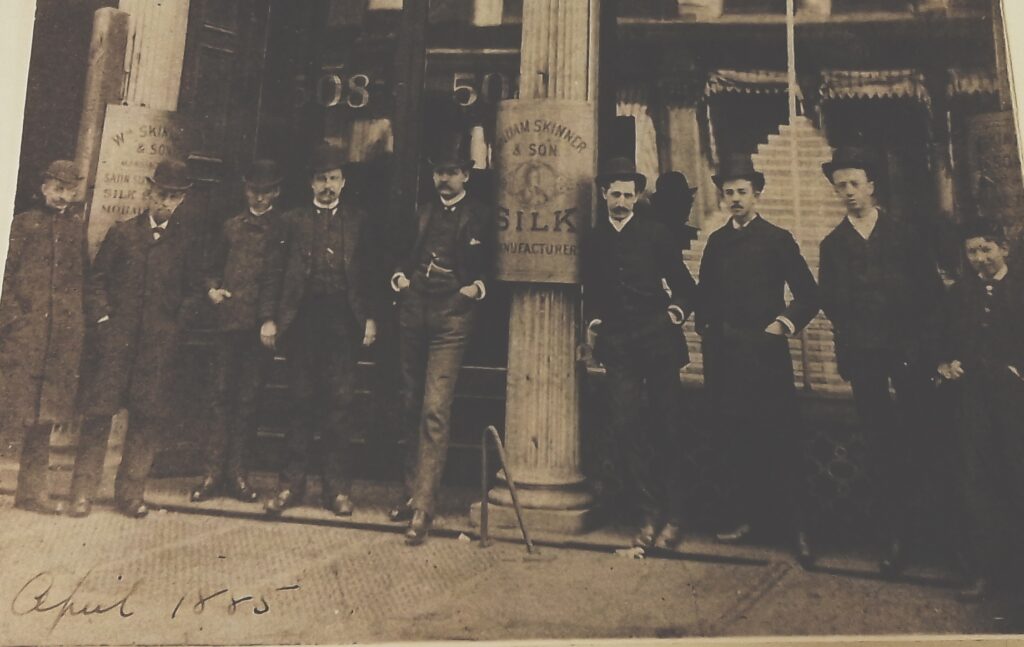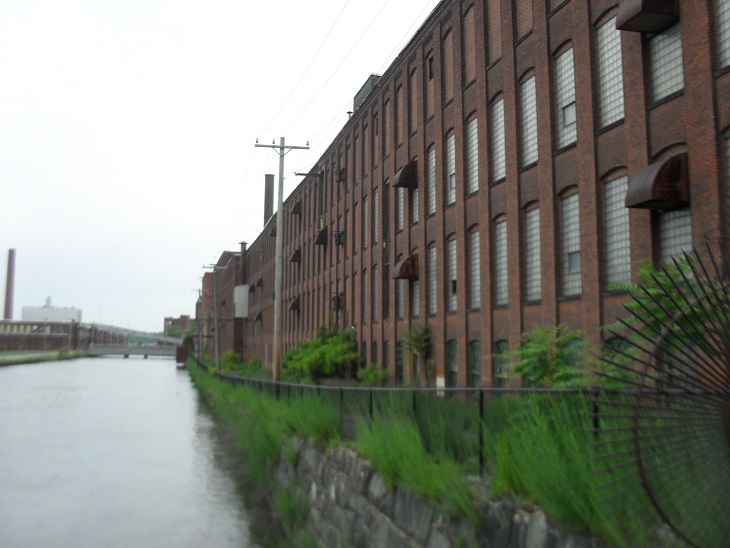
The Farr Alpaca Mill was started in 1873 by Hubert Farr. It was a Canadian company before that. It is mostly located between the first and second canals. They are a producer of alpaca wool. The alpacas of Peru were the source of the wool fabric. They also made serges.
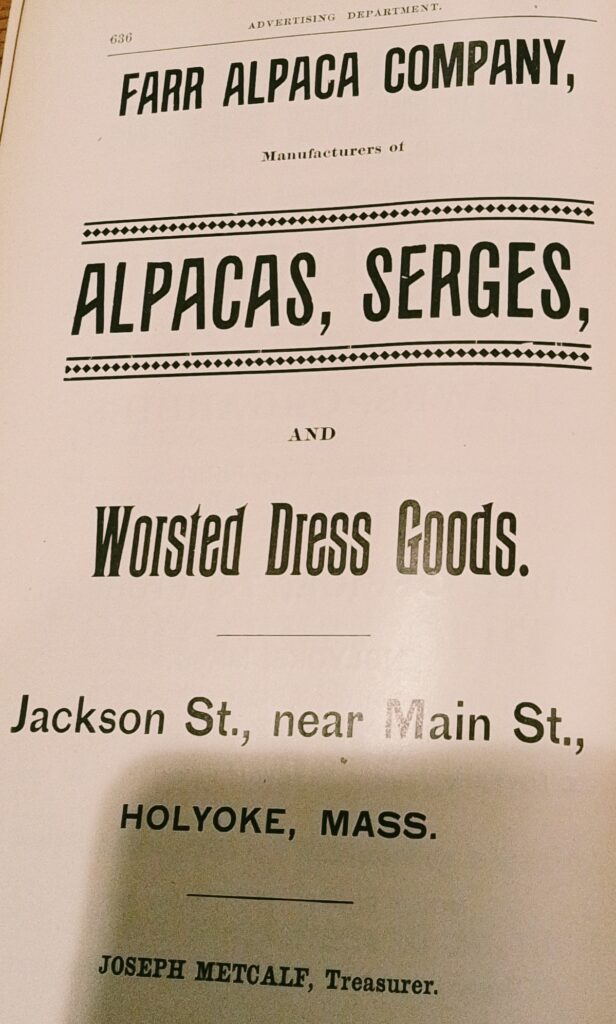
The company would last in production until 1939.
Inside mill 3 is a company theater which is now called the Winter Palace.
Read Wikipedia about Farr Alpaca.
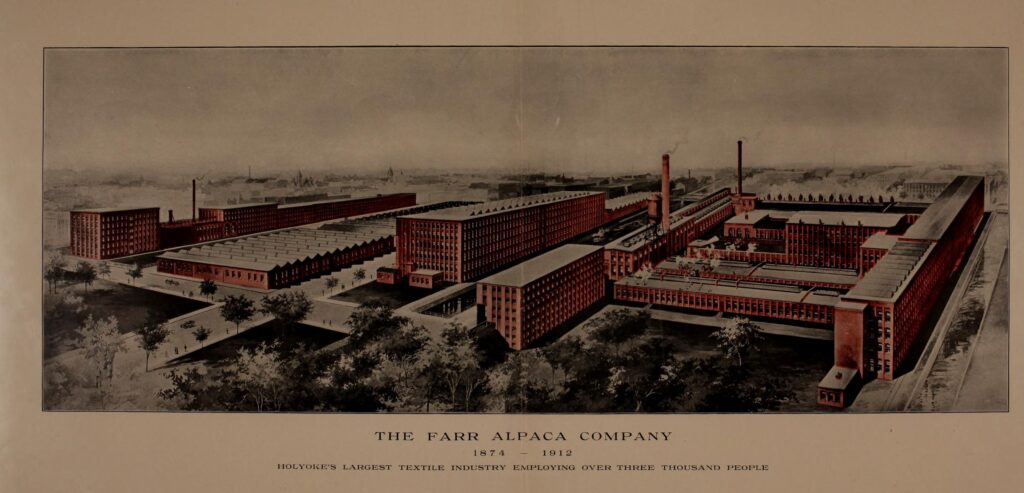
Sanborn map analysis:
Sanborn 1884 map and map B and Mosher and Bowers Buildings which would later be Farr Alpaca structures – also a storage site
Sanborn 1889 mill 1 map A and map B and mill 2 (not there yet)
Sanborn 1895 map for mill 1 and mill 2 and mill 3 (as HWP buildings)
Sanborn 1915 map (for mill 1) and Sanborn 1915 map (for mill 2) and mill 3
Sanborn 1949 map mill 1 and mill 2 (here is General Electric) and mill 3 (now Hart Top)
